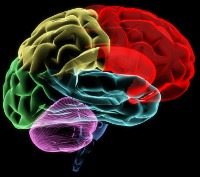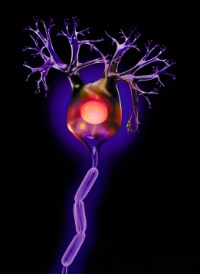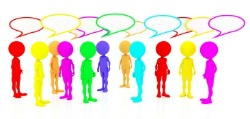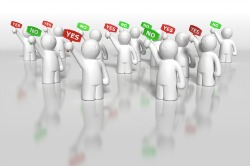What is brain neuroscience revealing about social decision making?
Recent improvements in medical imaging and measurement techniques have enabled significant new research in the study of the nervous system and the brain. These improvements have powered a number of investigations by psychologists that seek to address social behavior problems. As a result, there have been a number of studies and findings from cognitive psychologists focused on understanding how we decide.
 Brain neuroscience research is seeking to advance models of decision making in complex, interactive environments. Some of this research has begun to cross disciplines, making use of behavioral experiments, along with mathematical theories from economic and operations research, such as Game Theory. Research articles are plentiful, but some recent New York Times Bestsellers, such as Predictably Irrational (Dan Ariely) and Nudge (Richard H. Thaler and Cass R. Sunstein), are integrating some of the studies with creative anecdotes, making it easier to gain practical insights.
Brain neuroscience research is seeking to advance models of decision making in complex, interactive environments. Some of this research has begun to cross disciplines, making use of behavioral experiments, along with mathematical theories from economic and operations research, such as Game Theory. Research articles are plentiful, but some recent New York Times Bestsellers, such as Predictably Irrational (Dan Ariely) and Nudge (Richard H. Thaler and Cass R. Sunstein), are integrating some of the studies with creative anecdotes, making it easier to gain practical insights.
Findings from brain neuroscience research
Brain neuroscience is helping to reveal the biological constraints on complex decision making, as well as overlaps with other basic brain mechanisms. This work provides evidence that can help improve current decision making models by informing economic approaches with identified neural limits. Here are some of the important findings:
- Studies provide evidence that different areas of the brain are responsible for monitoring emotions (ours and others) as opposed to using information when deciding how to respond and regulate social behavior.
 Dopamine plays a critical role in the brain's reward system, helping to improve choices by updating outcomes based on environmental rewards and punishments. Social exchanges seem to directly impact this reward mechanism.
Dopamine plays a critical role in the brain's reward system, helping to improve choices by updating outcomes based on environmental rewards and punishments. Social exchanges seem to directly impact this reward mechanism.- Social decision making is influenced by the values of fairness and reciprocity, and are less selfish and strategic than game theory economic models would predict.
- Metacognition (thinking about feelings and thinking), based on empirical studies, appears to be a strong predictor of learning.
- There are types of decisions or problems where factors and options will overwhelm the brain's ability reach a sound result. Additional distractions contribute to this decline as brain resources are shared to address the added work.
What is this research telling us about social decision making?
 Many of the decisions we make are made as part of a group. Brain neuroscience is providing greater insight into the influence of emotions when choosing in a social context. Studies are also helping to identify mechanisms that cause us to diverge from the classical rational choice model.
Many of the decisions we make are made as part of a group. Brain neuroscience is providing greater insight into the influence of emotions when choosing in a social context. Studies are also helping to identify mechanisms that cause us to diverge from the classical rational choice model.
Insights coming from the research include:
- Mistakes are a critical element to becoming a better decision maker. Mistakes invoke mechanisms that help in modifying beliefs, moving decisions to a more conscious level.
- Results in gaming experiments show that people's choices do not conform to expected financial self interest predictions. Neuroscience is showing that powerful reward and punishment mechanisms influence social decision making, suggesting that emotional factors affect our choices to a much greater extent.
- Priming players with negative emotions changes response in games, providing evidence that prior emotional state affects social decision making processes.
Two significant models have developed, with one suggesting that the brain works as a single integrated system. The second model proposes the brain has two systems that often generate a conflicting choice that is ultimately resolved through another mechanism. Evidence, so far, provides support to both models, suggesting that these models need additional clarification.
Applying lessons from the research
Generating broad application can be a challenge as much of the research is directed toward narrow and specific topics. As an example, one research paper I reviewed focuses specifically on analyzing the differences in neuropsychological performance on financial decision making based on the effects of age and gender.
Here are some suggestions based on my investigation.
- Consider social values when deciding - These values are in the background. Explicitly addressing items like fairness and position can reduce resistance to valuable alternatives.
- Clarify intent - We use intention detection processes when thinking strategically. Clarifying intent can help with alignment.
- Learn how you react - Recognizing what and how you react enables self regulation and opens options when dealing with others.
- Acknowledge biological limits - Recognize human cognitive limitations and construct and manage decision tasks within those boundaries.
 Increase social intelligence - Reflect on your feelings and thinking, particularly when making decisions in groups. Increase social awareness by monitoring other people's responses and reactions during change.
Increase social intelligence - Reflect on your feelings and thinking, particularly when making decisions in groups. Increase social awareness by monitoring other people's responses and reactions during change.
Brain neuroscience is continuing to try to uncover the mechanisms that affect our thinking processes and enable more predictive models of behavior. Success in these investigations should lead to improved effectiveness for group decision making efforts.
Reference:
Sanfey, Alan G. "Social Decision-Making: Insights from Game Theory and Neuroscience". Science 26 October 2007: Vol. 318 no. 5850 pp. 598-602 DOI: 10.1126/science.1142996
Return from Social Decision Making and Brain NeuroScience to Decision Making Articles

